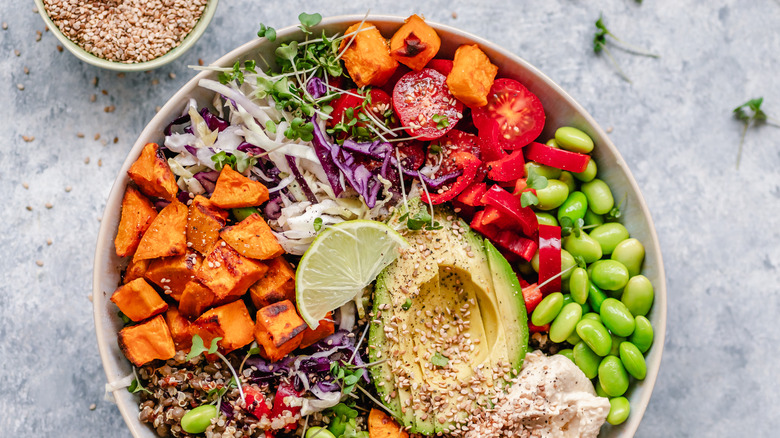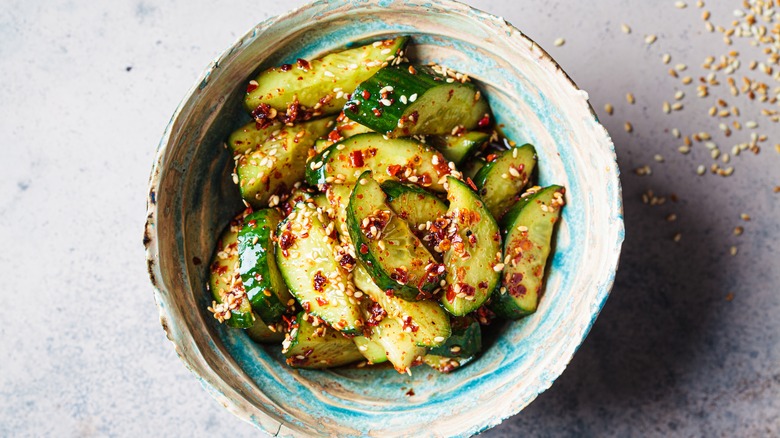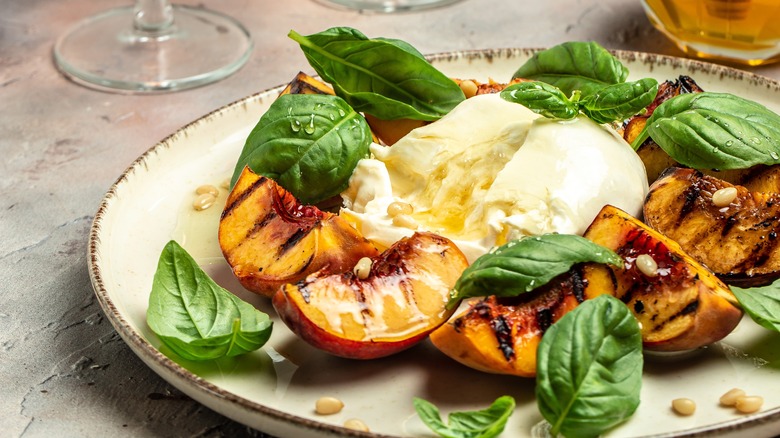To Build The Ultimate Salad, You Need To Use Your Taste Buds
You may feel like you have mastered the skill of whipping up a salad. However, your salad may not have achieved the ultimate balance of tastes. To achieve this perfect balance in your salad, you want to reach the perfect equilibrium between all your ingredients.
To be salad aware, one must consider the sweet, sour, spicy, salty, and bitter elements throughout. Is the salad too salty, with bacon, cheese, and olives? Or does it need a slightly sour note from the addition of lime or grapefruit? Is your spicy homemade sriracha overwhelming the more subtle flavor of bitter greens? These questions can quickly be answered by your taste buds.
Before constructing your salad, consider each ingredient and which category it will fall into. Then, you can start to build. Ideally, you want each taste to shine through in its very own way. You don't want ingredients to overpower one another.
Try adding sweet, sour, and spicy ingredients
Using sweet, spicy, and sour ingredients can help to balance the flavors in your salad and satisfy your taste buds. When considering sweet salad toppings, think of fresh and dried fruits like apples, cranberries, and mangos. Or, consider sweeter vegetables, like carrots, beetroot, and sweet potatoes. Herbs like basil or sweet mint may also add a touch of sweetness. Consider, as well, if you're marinating an ingredient in a sweet sauce like teriyaki, how this will lean into the sweeter elements of the salad. This logic will apply to the dressing, too.
Regarding spiciness, chili is an obvious fiery addition. However, it's essential to identify how other ingredients may heat up your salad — for instance, ginger, mustard, arugula, harissa paste, spices, and seasonings. If you're not a fan of spice, stick to milder options, like black pepper, and build your salad from there.
Sour salad ingredients may not be as physically apparent as the sweet ones, but they can be extremely overpowering. Citrus and vinegar are common dressing ingredients with a zesty and tart kick. But sourness can also come from pickled ingredients. Before adding any element to your salad, check how sweet, spicy, or sour it is.
Don't forget to add bitter and salty flavors
Salty ingredients may include cheese or seasoned proteins. Make sure not to add too many salty ingredients. Additionally, make sure your dressing isn't too salty, either. If everything in your salad is salted, it could create a meal with mouthfuls that taste like the sea.
Take this example: in a tomato, peach, and burrata salad, the burrata is the key salty ingredient. Its rich flavor is balanced by the sweet tomatoes, slightly sour peach, and a few basil leaves added for a peppery finish. The recipe is balanced by these different ingredients.
Bitter flavors are likely to be contributed by greens and other vegetables. Think dandelion greens, radicchio, Brussels sprouts, kale, and lettuce. If you've ever just eaten a mouthful of kale, you'll know it's not delicious alone. Instead, view your bitter ingredients as one element that will allow other flavors to shine.
To make the ultimate salad, one must follow their taste buds. Perceptions of taste differ from person to person, regardless of culture. One person's experience of sweetness could be very different from another's. Taste each ingredient, experiment, and trust yourself. Like playing the piano or learning a language, practice makes perfect.


